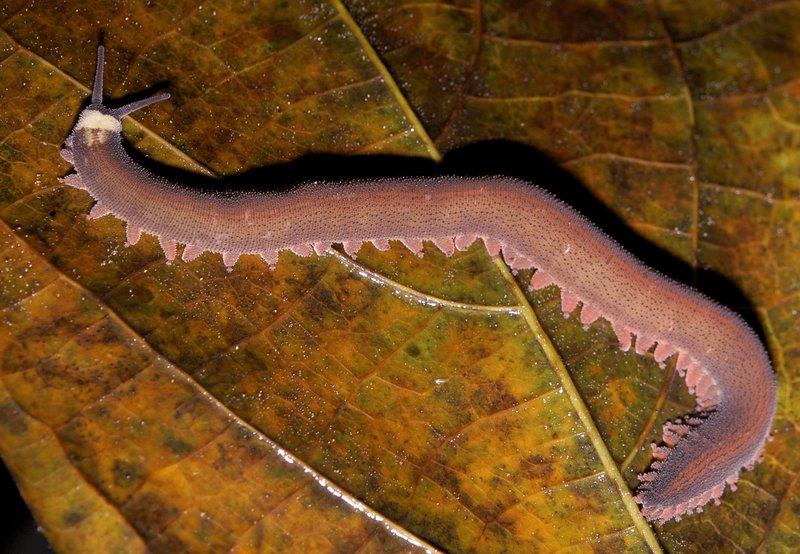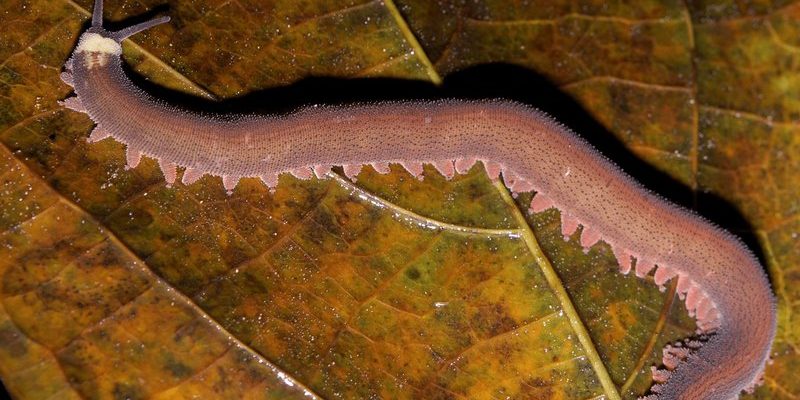
Velvet worms, or *Onychophora*, are fascinating creatures that blend traits from both arthropods and annelids. Imagine a little creature that looks like a cross between a caterpillar and a slug, with soft skin and a body lined with tiny, velvety tubercles. They’re not just cute; their hunting habits and survival strategies add a layer of complexity to their existence. So, do these quirky organisms engage in competition with other invertebrates? Let’s explore their lives, habits, and habitats to find out.
Understanding Velvet Worms
To appreciate the competition velvet worms might face, we first need to understand what they are and how they live. Velvet worms are soft-bodied, segmented invertebrates that thrive in humid environments, such as leaf litter in tropical rainforests. They have a unique method of locomotion, using their many legs to glide smoothly over surfaces, kind of like a caterpillar on a mission.
These creatures are hunters, feeding primarily on small insects and other arthropods. They even have a rather dramatic way of catching their meals, using slime to immobilize their prey. Picture a superhero using a web to catch a villain—velvet worms shoot out a sticky substance to ensnare their unsuspecting victims. This hunting style raises the question of whether they’re competing with other predators in their habitat.
The Role of Competition in Ecosystems
In any ecosystem, competition is a natural occurrence, like a race where all participants are trying to win a prize. For velvet worms, this prize includes food, space, and resources necessary for survival and reproduction. They inhabit similar niches as many other invertebrates, which can lead to overlapping diets and habitats. Think of it as a bustling café where everyone has the same craving for the daily special.
Competition can be direct or indirect. Direct competition occurs when multiple species vie for the exact food source. In contrast, indirect competition happens when one species affects the availability of resources for another without direct interaction. For velvet worms, the presence of predatory insects, like spiders or other carnivorous species, can directly impact their food availability and survival.
Predators and Competitors of Velvet Worms
Now, let’s take a closer look at who exactly velvet worms must compete with in their habitats. They’re not alone in their quest for food; many other invertebrates share their hunting ground. Some common competitors include:
- Spiders: These eight-legged hunters are efficient and agile, often preying on the same insects that velvet worms target.
- Ants: Known for their territorial behavior, ants can quickly consume insect prey, leaving less food available for velvet worms.
- Other Velvet Worms: Yes, even among their kind, velvet worms may compete for food and space, especially in densely populated areas.
Each of these competitors brings a unique strategy to the mix, which influences how velvet worms adapt to their environment. It’s like being in a crowded marketplace where everyone is trying to grab the same sandwich—you’ve got to be clever to secure your meal.
Habitat and Resource Availability
The habitat of velvet worms is crucial to understanding their competition dynamics. They prefer dark, moist environments, such as decaying logs or leaf litter, which provide both food and shelter. These habitats can be limited, especially in regions facing deforestation or environmental changes.
The availability of resources affects not only velvet worms but also other invertebrates sharing the same space. As habitats shrink or change, the competition intensifies. Imagine trying to share a small apartment with several roommates. It can get cramped, and resources like food and space become precious!
Since velvet worms are sensitive to moisture and humidity, any changes to their habitat can impact their survival. When resources become scarce due to competition or environmental factors, velvet worms may struggle to find enough food, affecting their growth and reproduction rates.
Adaptations for Survival
To thrive despite competition, velvet worms have evolved several unique adaptations. Their method of capturing prey with slime is one standout strategy. This allows them to immobilize fast-moving insects that their competitors may not catch easily.
Additionally, velvet worms can actively seek out different types of prey, expanding their diet beyond just insects. They might snack on small worms and other invertebrates when insects are scarce, showing their flexibility in tough times.
Furthermore, their slow, stealthy movements help them navigate through dense habitats without attracting too much attention. It’s like a stealthy ninja slipping through the shadows while others are busy fighting over scraps. This strategy enables them to avoid direct competition and ensures they can find food without alerting potential rivals.
The Impact of Environmental Changes
Environmental changes, such as climate change and habitat destruction, pose significant threats to velvet worms and their competitors. As temperatures rise and moisture levels fluctuate, their preferred habitats can become less suitable.
These changes affect not only velvet worms but also the entire ecosystem. It’s like a domino effect—fewer resources lead to increased competition, which can ultimately result in declines in certain populations. Velvet worms, already having to compete with other invertebrates, find themselves in an even tougher spot when their environment shifts.
Conservation efforts are critical to maintaining healthy ecosystems where velvet worms and their competitors can coexist. Protecting their habitats ensures that they have access to necessary resources, reducing competition and allowing for a balanced ecosystem.
So, do velvet worms compete with other invertebrates? The answer is a resounding yes. They are part of a complex web of life where competition plays a key role in determining their survival. From facing predators like spiders to sharing their habitat with other invertebrates, velvet worms navigate many challenges.
Understanding these dynamics offers valuable insight into the interconnectedness of ecosystems and the importance of conserving natural habitats. In the world of velvet worms, competition is not just about survival; it’s also about adapting to ever-changing environments and finding innovative ways to thrive.
If you ever find yourself marveling at a velvet worm in the wild, remember the challenges it faces daily. These little fighters continue to showcase nature’s resilience amid competition, proving that even the tiniest creatures play a vital role in our planet’s complex tapestry of life.

